An Advent Calendar of Vintage Adverts – 9th Dec
Each day I will unveil a new entry in my Advent calendar based on adverts printed in the Illustrated London News during the month of December eleventy-one years ago.
Your guide to London's culture and transport news and events taking place across the city.
Latest news articles about London’s long history.
An Advent Calendar of Vintage Adverts – 9th Dec
Each day I will unveil a new entry in my Advent calendar based on adverts printed in the Illustrated London News during the month of December eleventy-one years ago.


Unbuilt London: A roller-coaster monorail under the streets of London
A little over 100 years ago a radical new form of underground railway was proposed -- a monorail of most unusual design, but one that would be designed like an underground roller coaster with sharp declines and ascents between stations.
An Advent Calendar of Vintage Adverts – 8th Dec
Each day I will unveil a new entry in my Advent calendar based on adverts printed in the Illustrated London News during the month of December eleventy-one years ago.
20th Anniversary of the Battle of George Green
On this morning 20 years ago a tree was cut down. Not just any tree mind you by The tree, a tree that gained The definitive article as it became the centre ground for an environmental struggle against a new road building programme.
An Advent Calendar of Vintage Adverts – 7th Dec
Each day I will unveil a new entry in my Advent calendar based on adverts printed in the Illustrated London News during the month of December eleventy-one years ago.
An Advent Calendar of Vintage Adverts – 6th Dec
Each day I will unveil a new entry in my Advent calendar based on adverts printed in the Illustrated London News during the month of December eleventy-one years ago.
An Advent Calendar of Vintage Adverts – 5th Dec
Each day I will unveil a new entry in my Advent calendar based on adverts printed in the Illustrated London News during the month of December eleventy-one years ago.
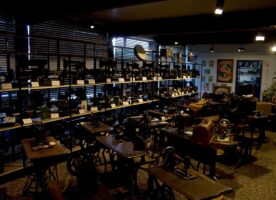

A marvellous museum of mechanical material manufactory
In darkest South London can be found a remarkable time capsule sitting in an otherwise ordinary industrial building, for to step past the ordinary doors is to enter a Victorian parlour of industrial delights.
An Advent Calendar of Vintage Adverts – 4th Dec
Each day I will unveil a new entry in my Advent calendar based on adverts printed in the Illustrated London News during the month of December eleventy-one years ago.
An Advent Calendar of Vintage Adverts – 3rd Dec
Each day I will unveil a new entry in my Advent calendar based on adverts printed in the Illustrated London News during the month of December eleventy-one years ago.
An Advent Calendar of Vintage Adverts – 2nd Dec
Each day I will unveil a new entry in my Advent calendar based on adverts printed in the Illustrated London News during the month of December eleventy-one years ago.
100th Anniversary of the Bakerloo Line Extension
One hundred years ago today, the process of linking up the tube railway with the city's main termini was completed with the extension of the Bakerloo Line to Paddington Station.
An Advent Calendar of Vintage Adverts – 1st Dec
Each day I will unveil a new entry in my Advent calendar based on adverts printed in the Illustrated London News during the month of December eleventy-one years ago.
A small garden of calm moments from Oxford Street
On the 9th November 1889, a new public garden was opened just to the south of Oxford Street as part of the clearance of slums and their replacement with social housing for the working classes.
100th anniversary of Merton Bus Garage
One hundred and two years ago, the London General Omnibus Company stopped using horses to draw its buses around the city, and a couple of years later, opened a brand new bus garage to cope with demand for its petrol based vehicles.
80th anniversary of Northwood Hills tube station
Happy Birthday to Northwood Hills tube station -- 80 years young today. If you use the station, do take time to look in the window of a local restaurant, as you might see a birthday cake in there, as one has been bought by the station staff.
Steam Trains Return to the London Underground
An early Christmas treat -- as on Sunday 8th December, for the first time since 1992 and possibly the last time ever, London Transport Museum will be running steam trains to Uxbridge along the Metropolitan line.
Rare public exhibition inside a 400-year old monastery
An exhibition has opened that can be looked as either an exhibition worth visiting to learn something, or a chance to go inside a building that has rarely been seen by the general public. Or maybe both?
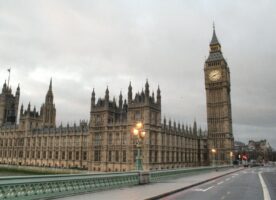
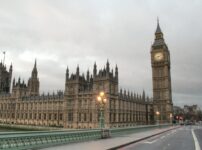
700th anniversary of the ban on MPs carrying weapons into Parliament
Exactly 700 years ago, King Edward I banned the wearing of armour or the carrying of weapons into Parliament. That law still exists today, and has never been amended or modified.
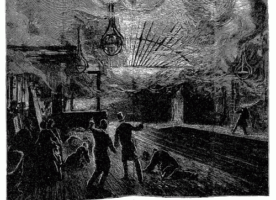
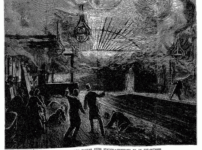
The first terrorist attack on the London Underground
This year marks the 150th anniversary of the London Underground, but it also marks another rather darker anniversary -- today is 130 years since the first terrorist attack on the London Underground.
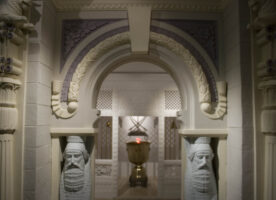
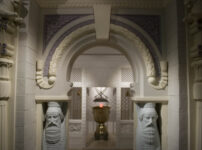
See the Zoroastrian Fire Temple in Central London
Fire, a primordial power has long held a certain fascination for mankind. Anything from its ability to heat early caves, and later homes, and then when fire was confined into gas boilers, we still decorate our homes with candles.
200th anniversary of London’s public gas supply
Two hundred years ago the first public gas supply was built in London, initially to light the streets, but also to supply some local houses.
An 1863 engraving of the London Bridge railway expansion
In 1863, the railway from Greenwich to London Bridge was extended to Charing Cross, but not without considerable disturbance to the lands it passed through.
The mysterious Cheapside Hoard goes on display at last
A historical mystery has gone on display at the Museum of London as the greatest collection of Elizabethan and and Stuart period jewellery has been laid out for the first time in a hundred years.